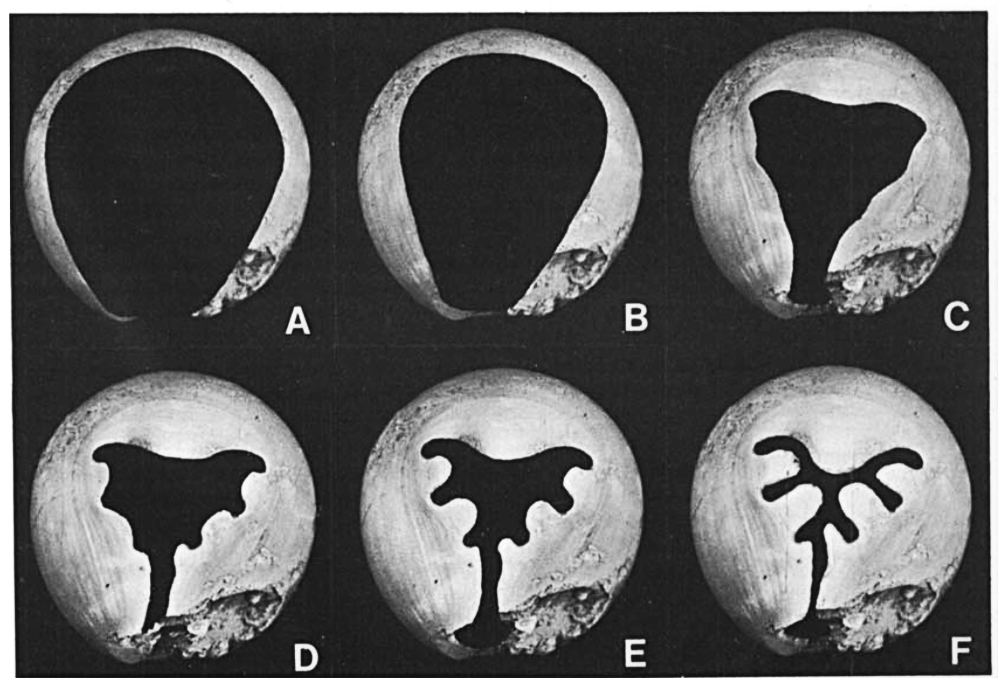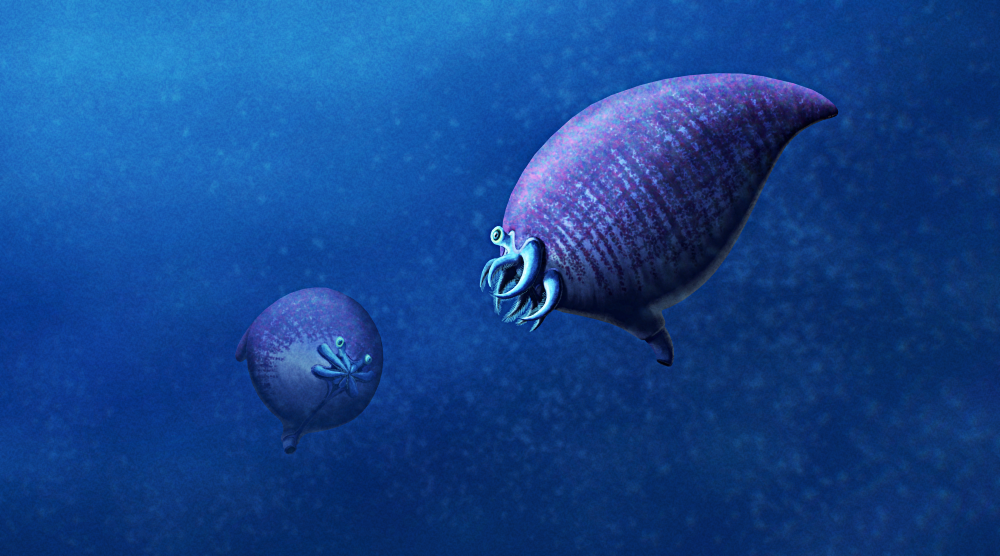Hexameroceras panderi was a nautiloid cephalopod that lived during the late Silurian, about 425-423 million years ago, in what is now Czechia.
Around 5cm long (2″), it had a downwards-curving egg-shaped shell that preserved the original color pattern on one fossil specimen, showing closely-packed crisscrossing vertical and horizontal bands.
Like several of its close oncocerid and discosorid relatives, its shell also developed a highly constricted opening as it reached maturity. This eventually formed into a narrow visor-like shape with several lobes that probably correlated to the life positions of the eyes and arms, with a “spout” at the bottom for the siphon.

From fig 6 in Stridsberg (1981)
The function of this structure is still unclear. It may have been a defensive measure against predators – but it would have also severely limited the range of motion of the arms and the size of food that could be eaten through the mouth, suggesting that Hexameroceras may have specialized in very small prey, perhaps even filter-feeding.
Another possibility is that these visored nautiloids might represent brooding females, walling themselves into their shells to protect their eggs and dying after releasing the hatchlings through the tiny remaining gap.
References:
- “Hexameroceras.” Paleobiology Database, https://paleobiodb.org/classic/checkTaxonInfo?taxon_no=13035
- Mironenko, Aleksandr A. “Early Palaeozoic Discinocarina: a key to the appearance of cephalopod jaws.” Lethaia 54.4 (2021): 457-476. https://doi.org/10.1111/let.12414
- Mutvei, Harry. “Siphuncular structure in Silurian discosorid and ascocerid nautiloids (Cephalopoda) from Gotland, Sweden: implications for interpretation of mode of life and phylogeny.” Gff 134.1 (2012): 27-37. https://doi.org/10.1080/11035897.2012.654507
- Stridsberg, Sven. “Apertural constrictions in some oncocerid cephalopods.” Lethaia 14.4 (1981): 269-276. https://doi.org/10.1111/j.1502-3931.1981.tb01098.x
- Turek, Vojtech, and Š. Manda. “Colour pattern polymorphism in Silurian nautiloid Phragmoceras Broderip, 1839.” Bulletin of Geosciences 86.1 (2011): 91-105. http://dx.doi.org/10.3140/bull.geosci.1240
- Wikipedia contributors. “Hexameroceras.” Wikipedia, 29 Jun. 2022, https://en.wikipedia.org/wiki/Hexameroceras

